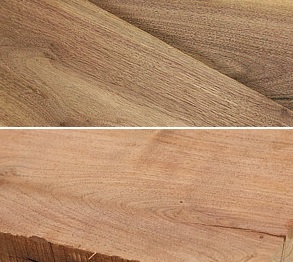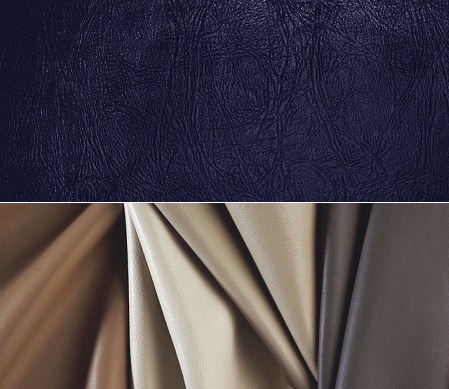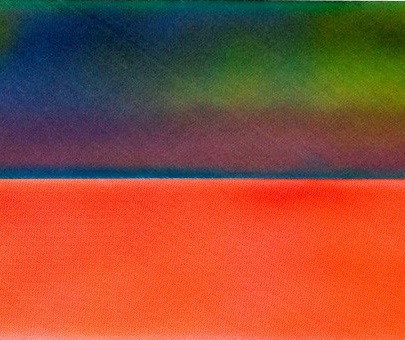w o o d & f i b e r
Wood, leather and fibers like silk, satin, wool, and cotton add warmth and softness to jewelry designs. Wood brings
warmth and lightweight patterns to designs, from domestic hardwodds like walnut and maple to exotic hardwoods
like bayong and purpleheart. Because many wood components
are made from scrap wood, it's easy to go "green" with accessories constructed with this
recycled and renewable material.
I love hand-dyed strips of silk ribbon, and it's been very fun to pair colorful ribbons with
pendants for a nice zip of color. An advantage to keeping silk ribbon long and loose: necklace length
is adjustable and the trailing edges of the ribbon look great too! Satin cord comes in terrific colors
and thickness to complement many designs, plus it's softer than chain.
f u n f a c t s :
•• w o o d
A trip to the wood store reveals a simple truth: there are many beautiful woods! From the king and
queen of woods (walnut and cherry) to the simple pine or popular, wood offers something for just
about anyone.

There's dark hues (ebony & wenge) and pale blondes (maple & beech), tough nuts (hickory) and
exotic hardwoods (sapele & padauk), not to mention fragrant woods like cedar and rosewood.
Unfortunately, most of these woods are not offered in bead form.
Thankfully, with some simple hand tools, one can convert wood scraps from larger projects into
unique jewelry art. Mass production beads tend to be from Asian hardwoods that
grow quickly and can be shaped easily, such as Chinese boxwood and cheesewood. Other exotic tropical woods
are bayong, palmwood and kamagong that are durable
with interesting grain and a variety of finishes.
•• l e a t h e r
Leather cord has been available in craft stores for decades, but cord in varieties of thickness, colors
and finishes is new and welcome, especially for pairing with interesting pendants and larger scale
beads. Deerskin leather is another staple that has found renewed popularity for its suppleness
and versatility in design. I like leather to convey woodsiness or naturalness to a design.
As an accessory, it's hard to argue for anything other than leather. Leather bags, shoes and
belts can be the defining article of an outfit; indeed, why else would fashion editors
talk of "It" bags and fabulous shoes?

In jewelry, leather also has a place, though perhaps not as prominent.
Deerskin leather is so soft and supple that it's tempting to use it for everything, from simple
ribbons to pair with pendants to elaborate braided pieces, just to have the softness in easy
finger reach. Most leather is from cow hides that can be treated to emulate a number of different
kinds and styles of leather. As with wood, scraps resulting from larger scale projects make
excellent raw material for jewelry components.
•• s i l k a n d s a t i n
It is still amazing to me that silk derives from caterpillars' cocoons. The material is strong, flexibles and
shimmers with hidden fire. How is this possible from insect debris?

We can talk about the protein fiber of
silk and the triangular prism-like structure that refracts light for the shimmering quality, but someone long
ago had to think of collecting enough material to spin into a fabric. Ingenious.
Technically, satin is a particular weave of silk fiber, though today satin can refer to the characteristic
four or more fill yarns floating over a warp yarn made of fibers of nylon or polyester as well as silk. This
uniformity in fill yarns is responsible for the glossy appearance since light is scattered less from the
surface.
•••

 There's dark hues (ebony & wenge) and pale blondes (maple & beech), tough nuts (hickory) and
exotic hardwoods (sapele & padauk), not to mention fragrant woods like cedar and rosewood.
Unfortunately, most of these woods are not offered in bead form.
Thankfully, with some simple hand tools, one can convert wood scraps from larger projects into
unique jewelry art. Mass production beads tend to be from Asian hardwoods that
grow quickly and can be shaped easily, such as Chinese boxwood and cheesewood. Other exotic tropical woods
are bayong, palmwood and kamagong that are durable
with interesting grain and a variety of finishes.
•• l e a t h e r
Leather cord has been available in craft stores for decades, but cord in varieties of thickness, colors
and finishes is new and welcome, especially for pairing with interesting pendants and larger scale
beads. Deerskin leather is another staple that has found renewed popularity for its suppleness
and versatility in design. I like leather to convey woodsiness or naturalness to a design.
As an accessory, it's hard to argue for anything other than leather. Leather bags, shoes and
belts can be the defining article of an outfit; indeed, why else would fashion editors
talk of "It" bags and fabulous shoes?
There's dark hues (ebony & wenge) and pale blondes (maple & beech), tough nuts (hickory) and
exotic hardwoods (sapele & padauk), not to mention fragrant woods like cedar and rosewood.
Unfortunately, most of these woods are not offered in bead form.
Thankfully, with some simple hand tools, one can convert wood scraps from larger projects into
unique jewelry art. Mass production beads tend to be from Asian hardwoods that
grow quickly and can be shaped easily, such as Chinese boxwood and cheesewood. Other exotic tropical woods
are bayong, palmwood and kamagong that are durable
with interesting grain and a variety of finishes.
•• l e a t h e r
Leather cord has been available in craft stores for decades, but cord in varieties of thickness, colors
and finishes is new and welcome, especially for pairing with interesting pendants and larger scale
beads. Deerskin leather is another staple that has found renewed popularity for its suppleness
and versatility in design. I like leather to convey woodsiness or naturalness to a design.
As an accessory, it's hard to argue for anything other than leather. Leather bags, shoes and
belts can be the defining article of an outfit; indeed, why else would fashion editors
talk of "It" bags and fabulous shoes?
 In jewelry, leather also has a place, though perhaps not as prominent.
Deerskin leather is so soft and supple that it's tempting to use it for everything, from simple
ribbons to pair with pendants to elaborate braided pieces, just to have the softness in easy
finger reach. Most leather is from cow hides that can be treated to emulate a number of different
kinds and styles of leather. As with wood, scraps resulting from larger scale projects make
excellent raw material for jewelry components.
•• s i l k a n d s a t i n
It is still amazing to me that silk derives from caterpillars' cocoons. The material is strong, flexibles and
shimmers with hidden fire. How is this possible from insect debris?
In jewelry, leather also has a place, though perhaps not as prominent.
Deerskin leather is so soft and supple that it's tempting to use it for everything, from simple
ribbons to pair with pendants to elaborate braided pieces, just to have the softness in easy
finger reach. Most leather is from cow hides that can be treated to emulate a number of different
kinds and styles of leather. As with wood, scraps resulting from larger scale projects make
excellent raw material for jewelry components.
•• s i l k a n d s a t i n
It is still amazing to me that silk derives from caterpillars' cocoons. The material is strong, flexibles and
shimmers with hidden fire. How is this possible from insect debris?
 We can talk about the protein fiber of
silk and the triangular prism-like structure that refracts light for the shimmering quality, but someone long
ago had to think of collecting enough material to spin into a fabric. Ingenious.
Technically, satin is a particular weave of silk fiber, though today satin can refer to the characteristic
four or more fill yarns floating over a warp yarn made of fibers of nylon or polyester as well as silk. This
uniformity in fill yarns is responsible for the glossy appearance since light is scattered less from the
surface.
We can talk about the protein fiber of
silk and the triangular prism-like structure that refracts light for the shimmering quality, but someone long
ago had to think of collecting enough material to spin into a fabric. Ingenious.
Technically, satin is a particular weave of silk fiber, though today satin can refer to the characteristic
four or more fill yarns floating over a warp yarn made of fibers of nylon or polyester as well as silk. This
uniformity in fill yarns is responsible for the glossy appearance since light is scattered less from the
surface.